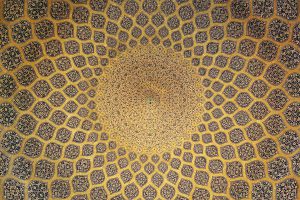Mufti Muhammad Taha Karaan (RA) on Preferring Imam Nawawi’s Opinions Over Those of Ibn Hajar and Ramli

بسم الله الرحمن الرحيم
Question
It seems, from my reading of al-Fawaid al-Madaniyyah, that the general rule is that Imam al-Nawawi’s opinions were given preference over Ibn Hajar’s or al-Ramli’s. Imam al-Nawawi’s opinions still have significance even when there is consensus among the muta’akhkhirin (i.e., Shaykh al-Islam Zakariyya al-Ansari, al-Shihab al-Ramli, and their pupils). Further fact that Imam Nawawi rahimahuLlah ta’ala is in the rank of sahib al-tarjih whereas Ibn Hajar and al-Ramli didn’t reach this level.
Mufti Taha’s Response
As-salamu `alaykum
I received from you a set of questions, or rather statements, to which I surmised you require comment from my side. I have done that in what stands below, keeping your original comments in black and italics, and my remarks in red.
The general rule is that Imam al-Nawawi’s opinions were given preference over Ibn Hajar’s or al-Ramli’s.
In principle, there should never exist the need to compare the tarjihat of Ibn Hajar and Ramli to those of Nawawi, simply because the role of Ibn Hajar and Ramli is
(1) to assign tarjih to cases upon where Nawawi did not assign tarjih
(2) to assign preference to cases where Nawawi’s books contain conflicting tarjihat
Their role does not include overturning Nawawi’s established tarjihat. Although they do in rare instances cross over into that territory, their views in such cases will not be given preference over that of Nawawi.
Imam al-Nawawi’s opinion still have significance even though there is consensus among the mutaakhkhirin (i.e., Shaykh al-Islam Zakariyya al-Ansari, al-Shihab al-Ramli, and their pupils).
The stated rule of the madhhab is that where consensus exists between the muta’akhkhirin, the position taken by the Shaykhayn will be overturned. This rule, however, has for the most part remained restricted to the realm of theory. When one actually starts looking for examples, you find it hard to prove an absolute consensus. In the case of tawaruth al-harbiyyayn there was a good chance of having an actual example of this phenomenon. Zarkashi, Adhra’i, Isnawi, Shaykh al-Islam, Ramli, Ibn Hajar and a host of other muta’akhkhirin all concurred in describing Nawawi’s statement as a sahw. Yet Kurdi goes on to demonstrate that Subki, Ibn al-Mulaqqin, Ibn al-Athir and Bakri have all agreed with Nawawi on the point.
The question which Ibn Hajar asks where he states the rule of overturning Nawawi’s position on the strength of consensus between the muta’akhkhirin, is very significant: “Anna bihi?”
I would say that the significance Nawawi’s views retain in the face of putative cases of consensus is due more to the challenge of establishing an actual consensus than a flaw in the theory. The difficulty in proving an actual consensus appears to be what stands in the way of this theory emerging from the level of theory into practical application.
Imam Nawawi rahimahuLlah ta’ala is in the rank of sahib al-tarjih, whereas Ibn Hajar and al-Ramli didn’t reach this level.
What are the factors to be considered in the categorisation of fuqaha into ranks? If it is knowledge alone, there are those like Taj al-Din Subki who believe that his father was more learned. Yet his tarjih is not given quite the same consideration, not even by Taj himself. A factor that I believe features prominently in elevating a person to the rank of tarjih is the era in which he lived. Where this coincides with a certain level of development in the madhhab, the person’s knowledge and works combine with the time and level of development within the madhhab to elevate him to that status. Although there may then come others who surpass him, the time of tarjih, and the need for tarjih, has already passed, so despite his knowledge, he does not get counted as a murajjih.
With Nawawi and Rafi’i we find that both of them lived at a time when the madhhab had seen substantial growth through the development of wujuh in the two Tariqahs. In addition, the existing corpus of the madhhab (both aqwal and wujuh) had been systematically documented in the works of men like Abu Ishaq al-Shirazi in the Iraqi tariqah, and Abu Hamid al-Ghazali in the Khurasani tariqah. Seeing as the dawn of the 6th century saw both development and systematisation, all that remained to be done was tarjih. And in the next century the ones who stepped up to this task were Rafi’i and Nawawi.
Now we move a few centuries ahead, to the 10th century where we find Ibn Hajar and Ramli. In their time there was no need to reinvent the wheel already perfected by the Shaykhayn. What was needed now was to rework the madhhab into a comprehensive and cohesive corpus in which would be included not only the development, systematisation and recension up the Shaykhayn, but also the development that came in the three centuries following the Shaykhayn. The contributions of muhaqqiqin like Ibn al-Rif’ah, the Subkis, Adhra’i, Zarkashi, Isnawi and others now had to be incorporated as well. In addition, there was the need to bring stability in cases of conflicting tarjih by Nawawi. This was the task to which initially Shaykh al-Islam and Shihab Ramli, and later their pupils Khatib, Ibn Hajar and Shams Ramli addressed themselves.
The above is my own approach, fashioned though a careful consideration of the historical factor. I am aware of statements that arbitrarily place later scholars like Ibn Hajar and Ramli on a lower level than Nawawi; but I find it hard to reconcile with the level of knowledge I see in them. How does one reconcile the abundant tarjihat of Ramli and Ibn Hajar with the view that they were ineligible for tarjih? That they did exercise tarjih cannot be denied by anyone who has properly studied their works. What is clearly noticeable, however, is that their tarjihat tend almost exclusively to be on cases where no tarjih by the Shaykhayn has been recorded. To anyone possessed of reasonable powers of deduction, the connotations hereof are clear.
When a later muhaqqiq turns his attention away from what earlier muhaqqiqin have already accomplished, and focuses it on areas still requiring attention, there are those who interpret this as inability on their part. With all due respect to those who take this view of things, I personally believe it to be a flawed deduction. The benefit of historical hindsight allows for a bird’s eye view of the development of our fiqh, and the insight afforded by this panoramic view of its development shows a unique inter-generational collaborative effort in which successive generations strive not to plant on land already cultivated by their predecessors, but on fresh, hitherto untilled virgin soil.
And Allah knows best.


